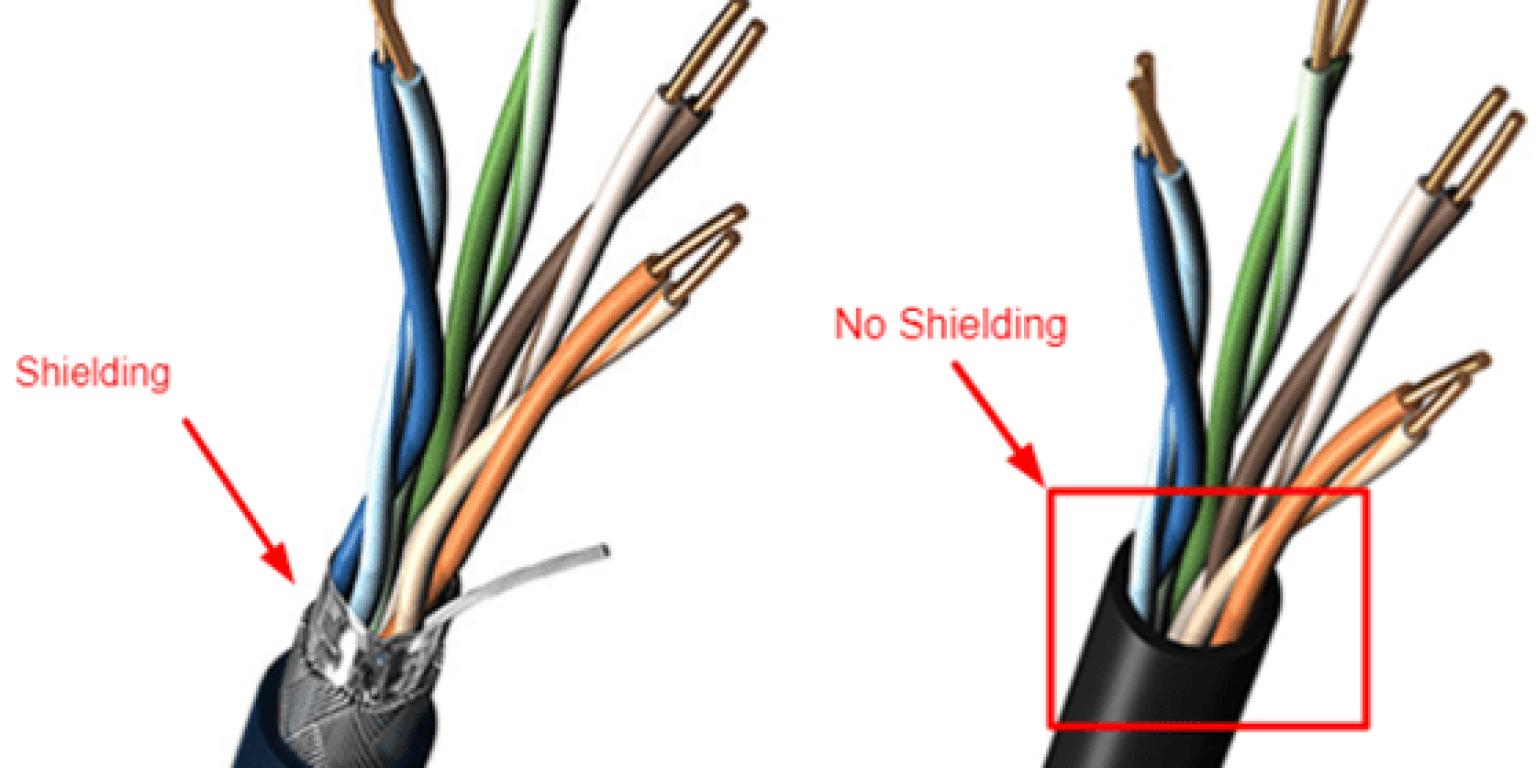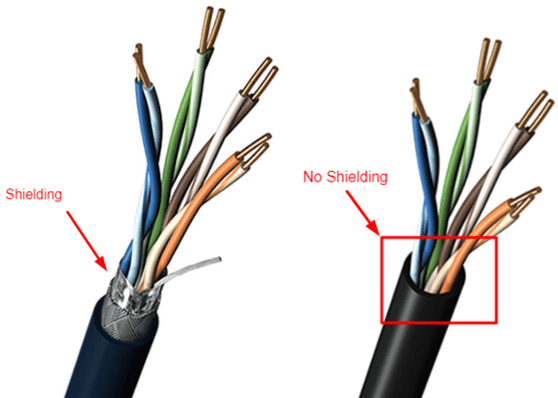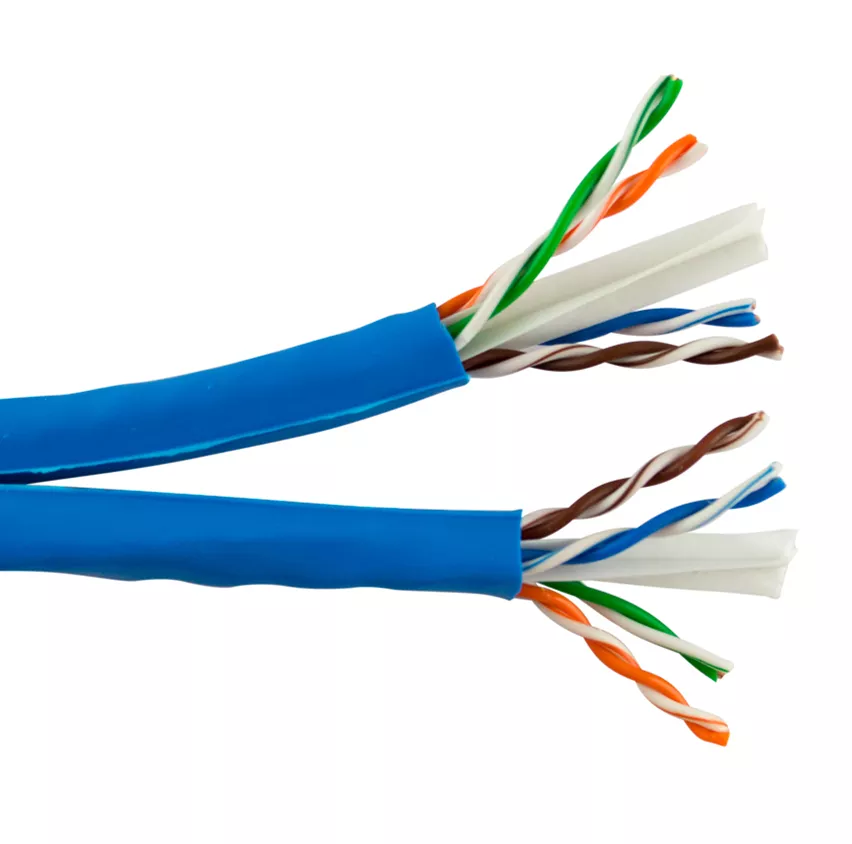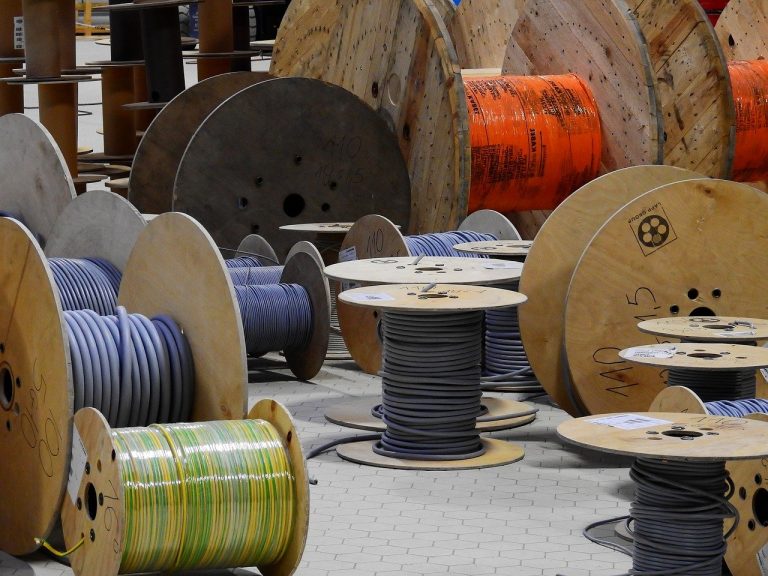When it comes to choosing shielded vs unshielded cable, you have several choices based on their construction and designs. These cables are usually categorized into shielded cables and unshielded cables based on their construction. How do these cables differ from each other? Which is the right cable for your application? In this article answers these questions.
Shielded vs Unshielded Cable: Introduction
Shielded cables are used in various applications, including audio and video equipment and scientific instruments. Audio/video equipment is subject to electromagnetic interference (EMI) and radio frequency interference (RFI), requiring shielded cables to protect against EMI. Likewise, network transmission lines and computer cables are commonly shielded to protect against EMI, which can affect the quality of data signals. For example, suppose EMI from other devices on a network line interferes with the signals transmitted. In that case, this could cause errors in the data exchange between two computers on that network and other problems. Another common application for shielded cables is scientific instrumentation, where shielding is often required by international standards for products used in many laboratory settings.
Also Read:Understanding Shielded Cable And Wire
Unshielded cable is a type of electrical wire that does not have a metallic shield surrounding it. unshielded cable has been used in low-voltage applications, such as homes and offices. However, some disadvantages of an unshielded cable may make it less desirable in high-voltage or critical applications. For example, these cables can be more susceptible to interference from other electrical devices than shielded cables, which could cause signal degradation. They can also be more vulnerable to damage from outside sources.
Shielded vs unshielded cable: the difference
The differences between shielded and unshielded cables can be difficult to grasp for those who haven’t dealt with them before, but the differences are significant.
shielded cable is designed for use in environments where EMI (Electro Magnetic Interference) is present in large quantities. The shield helps to prevent interference from other electrical sources. Shielded cable is typically used in commercial environments, such as office buildings or manufacturing areas.
For example, when a shielded cable is run between floors in a multi-story building, it can help to prevent electromagnetic interference that would otherwise disrupt devices that use wireless networking, such as smartphones and laptops.
Unshielded cables are used primarily in residential areas with little risk of outside interference. Unshielded cabling requires no special installation equipment and can easily be plugged into any outlet or jack. Due to its lack of shielding, unshielded cable has fewer bend radius restrictions than shielded cable. It makes it easier for technicians to maneuver through small spaces when running the cable between rooms and walls.
Unshielded cables cost less cheap than shielded cables. Unshielded cables are also easier to install, making them a popular choice among telecommunications companies and other businesses that need to run a lot of cable through a building. In addition, unshielded cables are more flexible than shielded ones and require less installation time.
Do i need shielded ethernet cable?
The cable should be shielded if the signal is carried over a long distance or passes through an area of electromagnetic interference (EMI) or radio frequency interference (RFI). Shielded ehernet cable uses twisted pairs copper wire that are insulated for protection from outside interference and additional grounding.
The purpose of shielding is to prevent outside interference from entering the signal and disturbing the information being carried by the cable. Because shielding prevents this from happening, it can also prevent the flow of signals from outside sources, such as wireless internet routers and cordless telephones. If high levels of EMI and RFI surround your home or office, you will want to shield your network cables to protect them from these signals.
If you are using a short cable that does not pass through high levels of EMI/RFI, you may not need a shielded cable. However, outfitting a short run with shielded cable ensures that there will be no problems in the future when you do need to do maintenance on your network devices.
shielded or unshielded ethernet cable for home?
Unshielded Ethernet cables work well in most small homes and businesses. Unless your home or office is located nearby power lines or other sources of interference (such as household appliances), you probably won’t need to use shielded Ethernet cables for networking purposes—thus, save money by purchasing unshielded ones.
However, if you have much electronic equipment plugged in, like laptop computers and printers, it might be worth considering getting shielded Ethernet cables. Shielded Ethernet cable is made with a steel wire mesh surrounding the cables, which helps block any interference.
Every network will come with different needs. You can typically get away with an unshielded cable if you’re running your own home network. However, suppose you have a large company or many high-performance computers tied to the same network. In that case, consider getting shielded cables for better performance and less interference.
Shielded vs Unshielded Cable:Which One Should I Choose?
Shielded vs unshielded cable is a hot-selling topic in the electrical industry. The choice of shielded vs unshielded cable depends on the environment where you plan to install your cables. As mentioned, shielded and unshelled cables are widely used in different fields due to EMI interference requirements. Airports, medical and factories often benefit from shielded cable because these places need to process numerous machines that produce considerable interference. On the other hand, it’s wise to choose unshielded cables for home and office use.
Shielded vs Unshielded Cable: Wiring your project
The discussion of shielded vs unshielded cable shown here highlights a major difference between the two types of wire. Shielding prevents unwanted electronic interference but does it at the cost of speed. While you should take your time deciding which type of wire you need, you also need the information to help you make an informed decision.
ZW Cable recognizes the importance of making well-informed decisions when sourcing shielded or unshielded cables for your application or installation. You can trust our extensive experience in the cable industry.
Last Updated on November 17, 2022 by Richard





